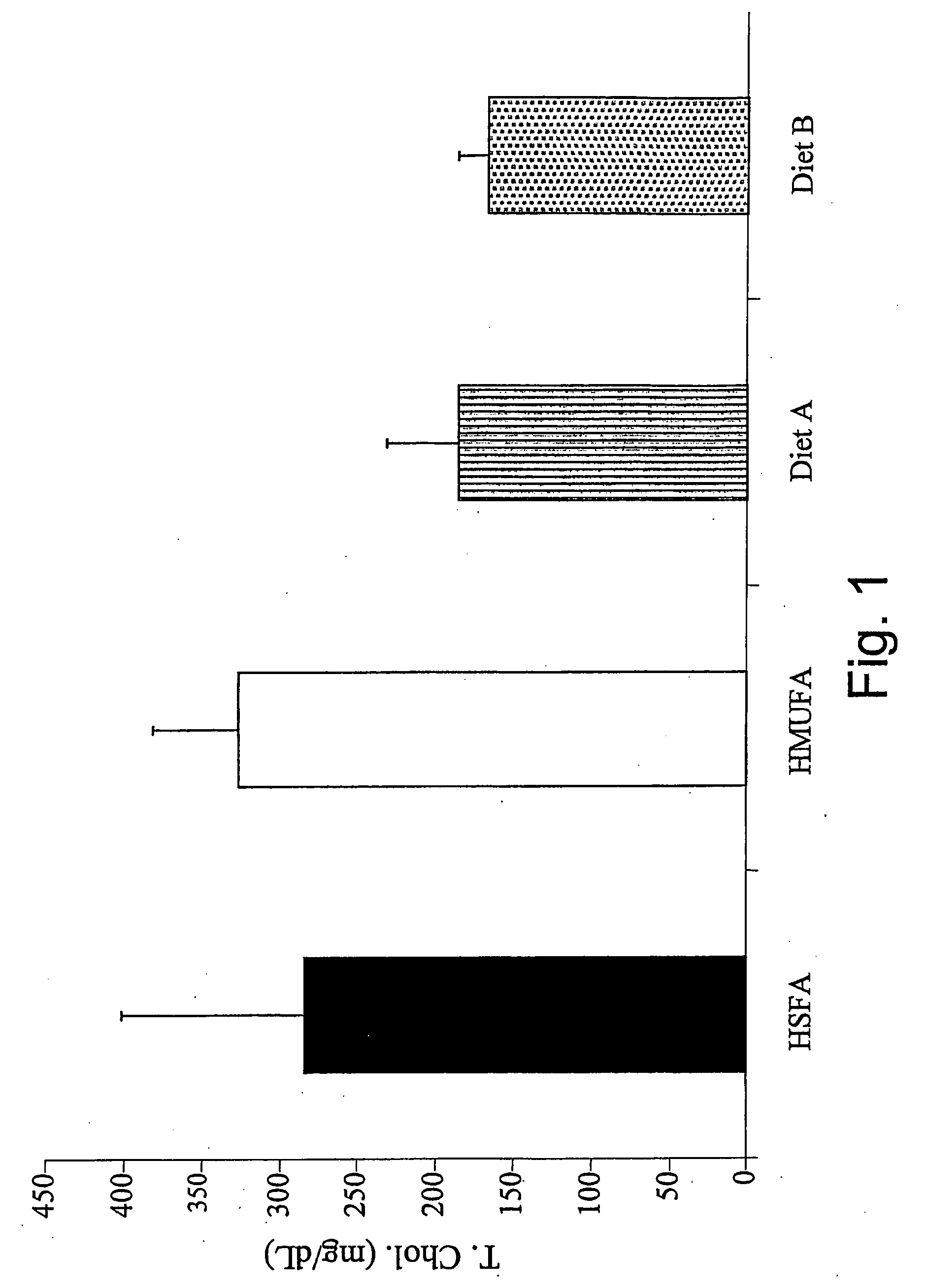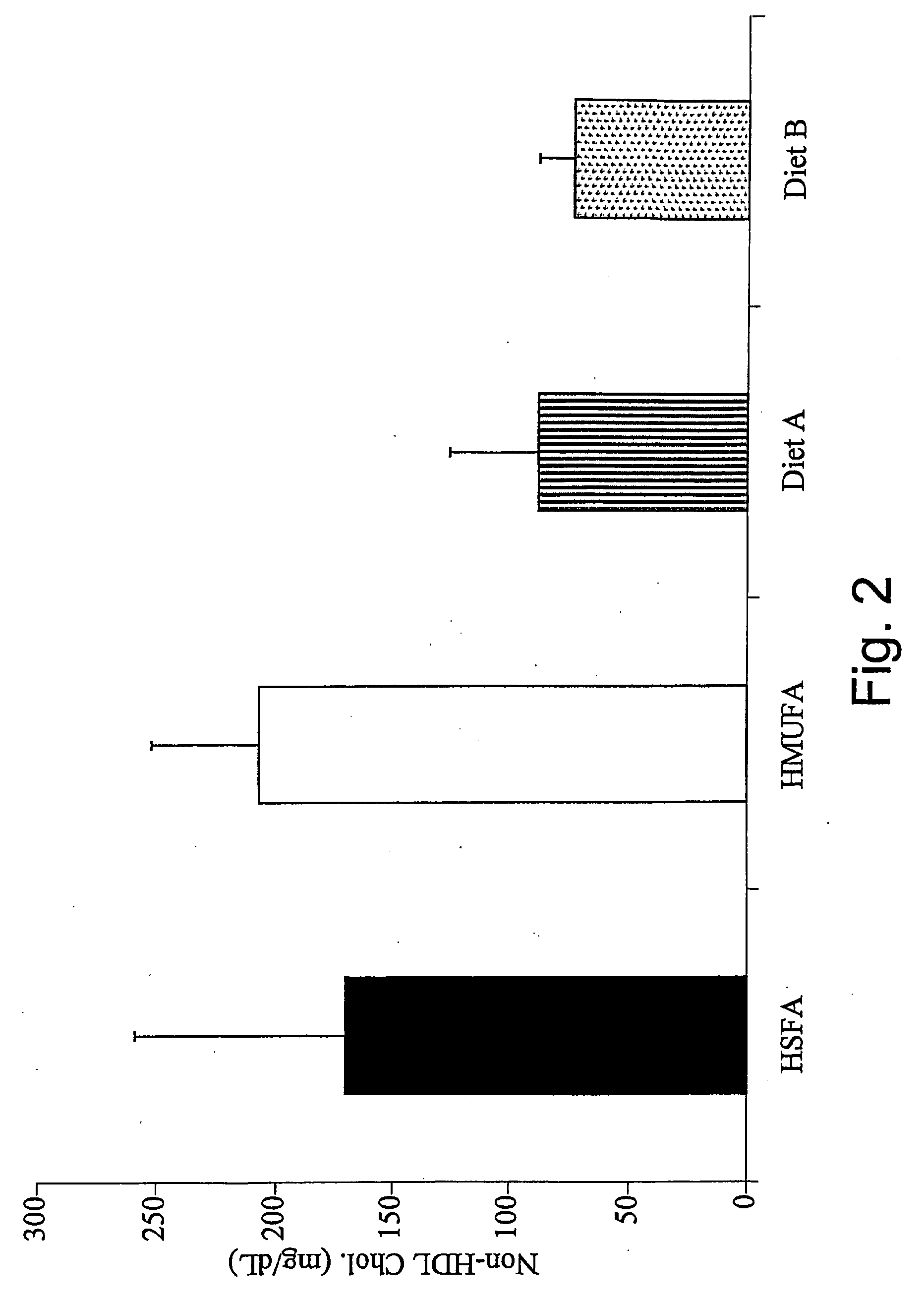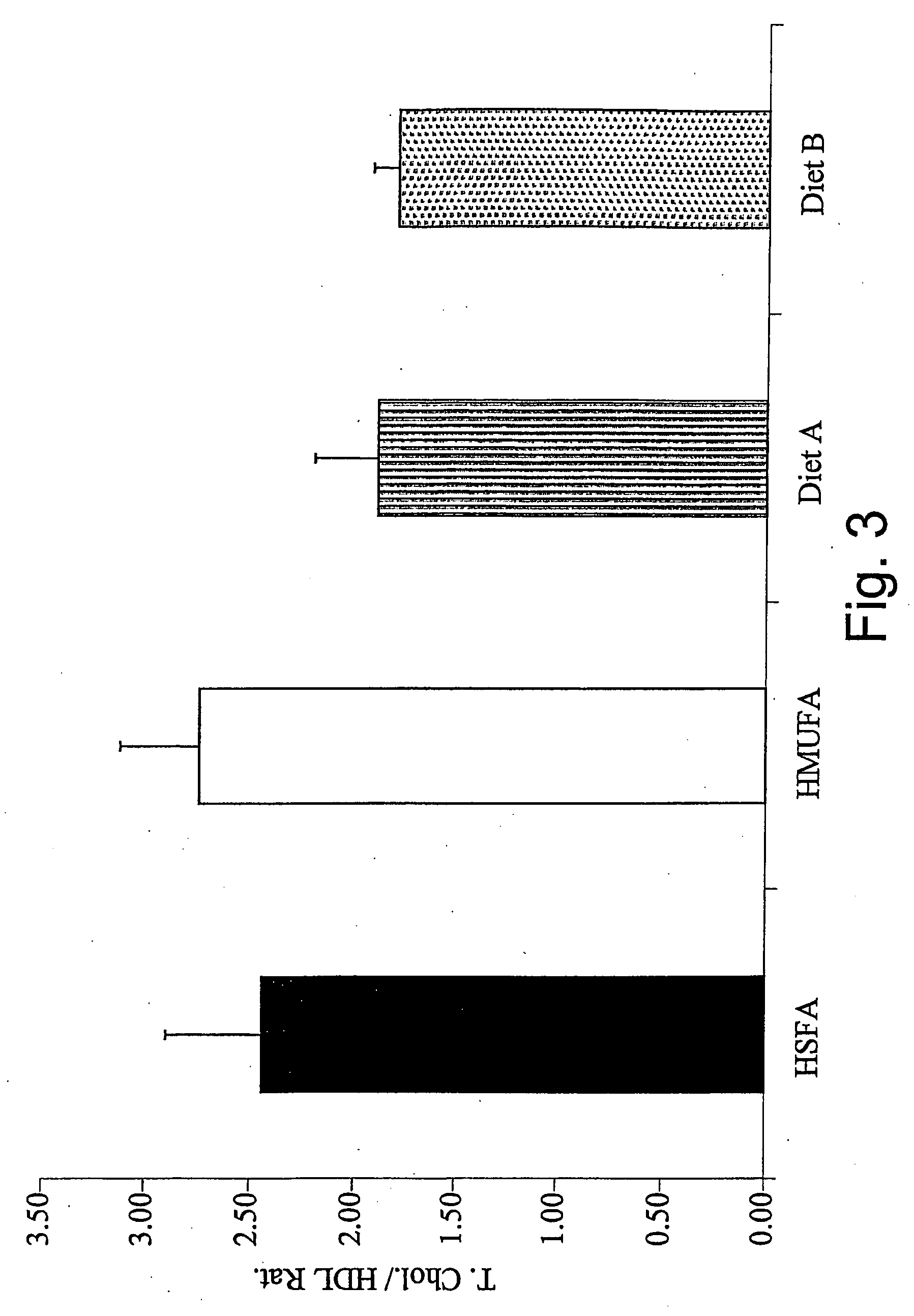Food products for diabetics
a technology for diabetics and food products, applied in the field of functional foods and clinical foods, can solve the problems of long-term damage, dysfunction and failure of various organs, and disturbance of virtually all, and achieve the effects of reducing the non-hdl cholesterol serum level, and reducing the total cholesterol/hdl ratio
- Summary
- Abstract
- Description
- Claims
- Application Information
AI Technical Summary
Benefits of technology
Problems solved by technology
Method used
Image
Examples
example 1
Effect of Mono- and Poly-Unsaturated Fatty Acid Diets on Diabetic Gerbils' Blood Lipids Content
[0158]The present experiment studies the effect of consumption of Diet A (PS-E+DAG, comprising soy sterols esters with HOSO oil (PS-E) and diacylglycerols derived from HOSO oil (DAG)) and Diet B (PS-E+DAG, comprising soy sterol esters with flaxseed oil (PS-E) and diacylglycerols derived from flax seed oil (DAG), having high content of polyunsaturated fatty acids) on the profiles of plasma lipids.
[0159]Diabetic male Psammomys obesus gerbils were assigned randomly to the indicated diet groups (8-10 gerbils each) for 3.5 weeks feeding period (as presented in Table 1 and Table 2). By the end of the experimental feeding period, blood samples were collected for plasma lipids analyses.
[0160]The total cholesterol plasma level in the different diet groups significantly varied as illustrated in FIG. 1. A striking difference can be observed among the controls and the diet-treated groups (diets A and ...
example 2
Effect of Monounsaturated Fatty Acids Diet on “Pre-Diabetic” Gerbils
[0170]Pre-diabetic individuals may exhibit high total cholesterol, LDL cholesterol, and triglycerides levels but low HDL cholesterol level as compared to non-diabetic individuals. This experiment comes to evaluate the effect of diet C, a cholesterol free diet, on the lipids blood level and lipids management in diabetic prone gerbils.
[0171]Sixty adult male Psammomys obesus gerbils were randomly assigned to two different high energy diets (n=30), which contained 2.93 kcal / g and only differed in their fat and lipids content. The effect of diet C (Table 2) was compared to the effect of the basic Harlan-high energy diet (Tekled Global, Madison, Wis., USA). After 4.5 weeks of experimental diet feeding, the gerbils were deprived of food overnight (16 h) and sacrificed. The liver and epididymal fat were harvested and weighed. Collected blood samples were used for biochemical analyses.
[0172]The effect of diet C on the develo...
example 3
Yoghurt Drink with Phytosterols
[0186]The fruit flavored yoghurt drink of the invention is designed primarily for the diabetic and pre-diabetic populations and it includes no sugar, has a low fat content as to not contribute to the hypertriglyceridemia and / or hypercholesterolemia associated with diabetic conditions. Furthermore, the yoghurt drink is fortified with soy phytosterols, providing 100% of their RDA, in order to further lower high blood cholesterol levels.
[0187]Ingredients: pasteurized milk, maltitol, fruit puree / concentrate, milk powder, processed starches (E1422, E1442), natural stabilizer (E440), flavor agents, citric acid, soy phytosterols.
[0188]Nutritional values (100 ml): Protein 3.1 g, Carbohydrates 16.4 g, Fat 1.5 g (1.18 g milk fat, 0.32 g soy phytosterols), Calcium 110 mg, Sodium 76 mg. Each 250 ml serving contains 0.8 g of soy phytosterols (100% RDA).
PUM
| Property | Measurement | Unit |
|---|---|---|
| weight | aaaaa | aaaaa |
| oxidative stress | aaaaa | aaaaa |
| body weight | aaaaa | aaaaa |
Abstract
Description
Claims
Application Information
 Login to View More
Login to View More - R&D
- Intellectual Property
- Life Sciences
- Materials
- Tech Scout
- Unparalleled Data Quality
- Higher Quality Content
- 60% Fewer Hallucinations
Browse by: Latest US Patents, China's latest patents, Technical Efficacy Thesaurus, Application Domain, Technology Topic, Popular Technical Reports.
© 2025 PatSnap. All rights reserved.Legal|Privacy policy|Modern Slavery Act Transparency Statement|Sitemap|About US| Contact US: help@patsnap.com



